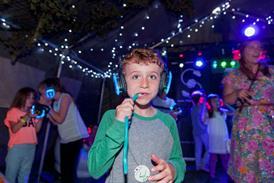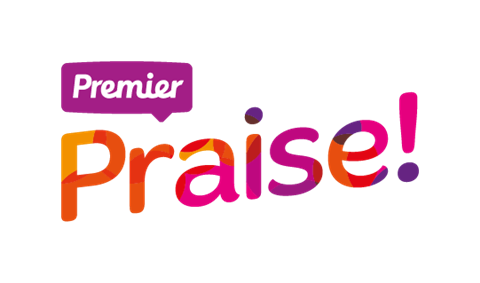Transitioning to a new school is hard enough without the additional complexity of autism - Lynn McCann helps parents navigate a doubly difficult time

It is the time of year when many parents are looking forward to the new school year. Children’s summer holidays seemed to last a long time when I was a child, but as a parent, I was always thinking in the back of my mind about preparation for going back to school. New shoes, new uniform, new lunch boxes, new classrooms and new teachers…the list seemed endless.
For some autistic children and for their parents it’s just enough to be able to take the next breath
For many parents of children with autism and other additional needs there are many more things to be thinking about. Every child with additional needs is an individual but there are some common additional issues for those families at this time of the year.
- Fear of unpredictability. Uncertainty can induce huge anxiety for many children with additional needs.
- Sensory anxiety about new places, people, clothing, routes, classrooms, seating plans, smells, food, displays etc.
- A strong need for routine, which is facing change.
- Many families face changes and lack of communication about school transport.
- Having to remember people from 6 weeks ago and pick up those relationships.
- Fear of the battle to get your child’s needs understood and met. Some will not have a school place to go to or have a child who is in burnout, traumatised and unable to go to school.
Why are transitions so difficult?
Autistic young people are often monotropic thinkers. This means that they need a clear and predictable track of information to be able to manage and cope with the way ahead. A bit like going on a train journey. Knowing the destination, expected arrival time at each predictable station on the way and keeping on the track. This is calming and safe. They need to get in the ‘flow’ of this track to move through an activity or experience. This explains why many autistic children seek predictability, control and routine. This is a way of bringing predictability into a frighteningly unpredictable situation. Change and unexpected additions or distractions can cause their flow to shatter, and often triggers the fight, flight or freeze response. We might see this as being uncooperative or what the National Autistic Society describes as “an intense reaction to an intolerable situation” – or people might call it a ‘meltdown’ or ‘shutdown’.
transitions are often huge events for autistic and other children with additional needs
An autistic child can also become intensely engaged and in a deep state of joy, doing what they love. If someone comes and forces them out of that flow into doing something they don’t want to do or are just not ready to do because they haven’t finished what they were doing; it causes a fracture in their flow and often leads to great distress. This is often why transitions are often huge events for autistic and other children with additional needs.
What transitions do you need to consider?
- Daily activity to activity transitions. This includes the transitions during Sunday’s church services.
- From holiday mode, back into the rush of getting up early and ready for school.
- End of year transitions - at school and moving to a new church age group.
- Life transitions – moving house, new baby, death of a grandparent, parent’s jobs.
- Personal transitions – growing up, more expectations and transitions into new stages of life. The transition post 16 or 18 is particularly difficult for children with additional needs.
What can help?
Giving lots of clear information so that they can form that new track in their thinking and move onto it. Making adjustments so that the new stage or place is as comfortable and familiar to them as possible. Visual pictures or symbols can help so many autistic young people. This is because the visual stays the same and stays in one place that they can keep checking it until they can process it. This can include a visual timetable which sets out the whole day, a photo of the place you are going, or an object the person associates with the place or activity. Consistency and predictability are important and reassuring.
When facing any transition, the key is to ground it into what will be the SAME. Remind them what they already know, what they can control and what is already familiar to them. Going back to school can be supported by a little booklet with pictures and reassuring messages about the school. If your school hasn’t made one of these for your child before the end of term, email them and ask for photos of the new class set up, the entrance your child will use, their teacher, and ask for the schedule for the first day. If the school doesn’t reply, get what you can off their website but only add what you know will be certain. Here’s a handy booklet you can download and use to do this.
Faith filled support for your child
The Christian faith is a transition. Jesus says that we are transformed from death to life. But there is also a lot of certainty and security in Jesus in a life with him. Hebrews 13:8 says, “Jesus Christ is the same yesterday and today and forever.” Remind your child about the ways that God is always the same. His promises don’t change, and his character is the same as Jesus. Write God’s promises on post it notes around your home, on the bathroom mirror, on the door as you go out. I know many strong and faith filled autistic Christians. The security of an unchanging God calms their soul. It is the rock that is described in the Psalms. Once you look for logic and predictability in Jesus, then you can lead your autistic child to what brings predictability and peace. This is preparing that thought ‘train track’ and explaining and building their understanding in the way they need it.
You can write prayers based on God’s promises that you and your child can pray together. The repetition of the same words can be reassuring. Repeat and practice God’s promises so that they can come into their mind when they are scared or anxious. If you know a family with a child with additional needs, pray with them and into these situations too.
Read more:
If you’re dreading the summer holidays the joy of the Lord can be your strength
When parenting advice doesn’t work: Understanding PDA in autistic children
For some autistic children, those with other additional needs, and for their parents, it’s just enough to be able to take the next breath, to transition to the next hour of the day without falling apart. For you all, wherever you are, this is my prayer for you: That you will have the supernatural hope of Jesus in every moment of the struggles and the joys of your family life. When God made his promise, he gave his word. He did this so we would have good reason not to give up. Instead, we have run to take hold of the hope set before us. This hope is set before us in God’s promise. So, God made his promise and gave his word. These two things can’t change. He couldn’t lie about them.
Helpful resources
For lots of helpful resources on autism see: Reachout’s website.
In particular see here a visual timetable you can use at home.
































